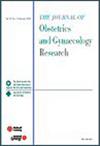Global research trends and focus areas in gynecologic oncology education: A bibliometric and network visualization study
Abstract
Background
Gynecologic cancers, comprising 14.4% of newly diagnosed cancer cases in women globally, are substantial causes of both mortality and morbidity, with a profound impact on the quality of life (QoL) of survivors. Therefore, it is crucial to strengthen education for both healthcare providers and patients. However, there remains a limited amount of comprehensive, systematic analysis on global research trends and key developments in this area, so this study aims to investigate global research trends and key focus areas in gynecologic oncology education through bibliometric analysis and network visualization, providing data-driven support and valuable academic insights for future research.
Method
Articles on gynecologic oncology education published between 2014 and 2024 were retrieved from the Web of Science Core Collection database. We used bibliometric software (VOSviewer and CiteSpace) for quantitative analysis of co-citation, co-authorship, and co-occurrence patterns, focusing on geographical distribution, key authors, references, and keywords.
Results
Research in this field has grown modestly since 2014, with annual publications exceeding 10 only after 2018. The author's analysis indicates that Ignacio Zapardiel, Lisa Singer, Manchanda, Ranjit and others are the core authors in this field. Western nations such as the United States and Germany lead in publication volume and citation impact, while Asian countries rarely appear in leading rankings. Keyword analysis indicates a recent focus on “education” within training frameworks.
Conclusion
Gynecologic oncology education remains nascent yet promising. Fostering international interdisciplinary collaboration—especially with Asian nations—is critical. Future priorities include high-fidelity bioprinting, intraoperative navigation systems, multicenter technology standardization, specialized sexual health rehabilitation, and culturally adapted interventions.


 求助内容:
求助内容: 应助结果提醒方式:
应助结果提醒方式:


